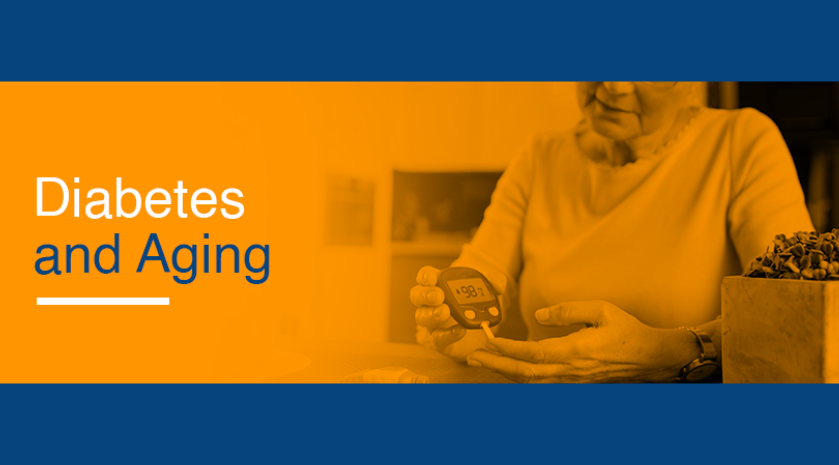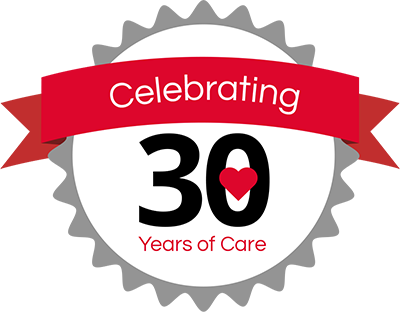Nearly one-third of adults over the age of 65 have diabetes. Another one-third of older adults are “prediabetic,” which means they are at high risk of becoming diabetic. Although diabetes is becoming increasingly common among older adults in the United States, there are many unknowns and misunderstandings about this serious medical condition. Some of the mystery surrounding this disease comes from the lack of solid research focused on diabetes in older adults. And some of the confusion may also arise from the fact that older adults with diabetes often deal with several other health issues simultaneously.
If you or someone you love is living with a diabetes diagnosis, it’s crucial to understand how diabetes affects aging, and what the treatment of diabetes looks like for older adults.
What Is Diabetes?
Although the word “diabetes” is relatively common, many people don’t understand what it is or why it’s so severe. So what is it?
Diabetes is a condition in which a person’s body does not properly produce or convert insulin, the hormone responsible for making glucose. What is glucose? When we eat food, our bodies convert it to glucose, which is the medical term for a sugar that provides the energy we need to function. The pancreas, which is part of your body’s digestive and endocrine systems, is responsible for converting food to glucose, as well as producing the insulin needed to help your body process glucose and obtain the energy it needs. When these systems aren’t functioning like they should, too much glucose can remain in your bloodstream. Over time, this can lead to a range of severe health problems.
Why is diabetes more common in the elderly?
The short answer is because their pancreas — and body as a whole — is no longer functioning as it should. It is no longer capable of processing glucose and converting it to energy in the way it did when they were younger. Doctors also believe the prevalence of diabetes among older adults is because of an increasingly sedentary lifestyle, a tendency to be overweight or improper diet.
What are the symptoms of diabetes in the elderly? Diabetes symptoms in older adults include:
- Fatigue
- Unexplained weight loss
- Increased appetite or thirst
- Blurred vision
- Frequent urination
- Skin infections
- Delayed healing of a wound
There are two primary types of diabetes.
1. Type 1 Diabetes
Type 1 diabetes occurs when the body is unable to make any insulin. Although older adults can have Type 1 diabetes, this form of diabetes typically develops in childhood or adolescence and progresses with age. An adult with Type 1 diabetes most likely received their diagnosis during their childhood and continues to manage it as they age.
2. Type 2 Diabetes
The more common type of diabetes in older adults is Type 2 diabetes. It occurs when the body can make some insulin, but not enough to regulate a person’s glucose levels appropriately. Although it can occur at any age, type 2 diabetes is much more likely to occur in older adults, especially if they are inactive, overweight or have a family history of diabetes.
Common Health Problems Associated With Diabetes as You Age

Older adults suffering from diabetes tend to find they also struggle with other health issues. Why? Diabetes is hard on your body, as is aging. When you combine those two things, the human body often struggles to function as it should. As a result, there are several common health problems associated with diabetes, including the following.
1. Vision Problems
Older adults with diabetes may also develop eye diseases, including glaucoma, cataracts or retinopathy, which are damaged blood vessels that leak fluid into the eye. If left undetected, any of these conditions can lead to blindness, which is why it’s so vital that adults with diabetes also receive annual eye exams with pupil dilation.
Adults with diabetes should always be on the lookout for vision-related issues. Some signs that diabetes is beginning to impact vision include:
- Spots or floaters in your line of sight
- Blurry or double vision
- Feeling of pressure or pain in one or both eyes
- Difficulty reading books or signs
- A decrease in peripheral vision
Although an annual eye exam is an essential part of prevention and early detection, don’t wait for this appointment to address problems with your vision. If you have diabetes and you’re experiencing any of these symptoms, contact your eye doctor immediately. These may be signs your diabetes isn’t under control or its impacting more than just your blood sugar levels. Although conditions such as glaucoma or cataracts are not reversible, they are treatable when detected early.
2. Gum Disease
Because diabetes lowers the body’s ability to fight infection, adults with diabetes are at high risk for developing gum disease, which is an overabundance of bacteria in the mouth. Gum disease can cause a number of problems with teeth and gums, but many people don’t realize gum disease can also contribute to other significant health problems, including heart disease. Adults with gum disease have a 20% higher risk of developing heart disease.
Gum disease can also increase a person’s risk of:
- Dementia
- Rheumatoid arthritis
- Stroke
3. Sexual Function

Yes, things in the bedroom tend to slow down as you get older, but adults with diabetes may find their sex life comes to a screeching halt. That’s because diabetes can damage the blood vessels and nerves that impact a person’s sexual function. In men, this manifests itself as erectile dysfunction or retrograde ejaculation. In women, it may manifest itself through vaginal dryness, inability to orgasm or pain during sex.
The good news is, there are several treatment options available to make you comfortable and address these unpleasant occurrences. It can be uncomfortable to bring up the topic with your doctor, but don’t hesitate. Since all of these issues are treatable, there’s no reason to suffer in silence.
4. Influenza
The combination of aging and diabetes weakens the body’s immune system. Older adults with diabetes are more susceptible to the flu, as well as several secondary infections that can result from the flu, including pneumonia, sinus infections, bronchitis and ear infections. On the flip side, when someone with diabetes contracts the flu, it can raise blood sugar levels and cause complications in diabetes among the elderly.
The flu can raise blood sugar levels primarily because it impacts a person’s appetite. While they’re sick, they may not eat as much or eat the foods that will keep their blood glucose levels in check. And, the virus itself can mess with glucose levels too. This is why individuals with diabetes are strongly encouraged to get a flu shot each year. If you don’t get the flu shot or come down with the flu in spite of the shot, contact your doctor as soon as you suspect the flu. If you receive antiviral medication within 48 hours of your first symptoms, you can lessen the severity and duration of the flu, as well as its effects on your body.
5. Brain-Related Issues
Although there are still many unknowns about dementia and Alzheimer’s disease, diabetes has links to both. That’s because diabetes, especially when it’s not treated and controlled properly, impacts all the body’s major organs, including the brain. Adults with diabetes are also at higher risk for depression and cognitive impairment, which refers to specific memory-related issues that aren’t associated with Alzheimer’s or dementia.
6. Falling
Besides issues with vision and potential side effects of several common medications, diabetes can cause a condition called peripheral neuropathy. This condition damages nerves in the feet and causes pain, tingling and even numbness. These sensations — or lack thereof — can make it challenging to maintain balance and put an adult at increased risk for tripping or falling
How to Take Care of Your Diabetes as You Get Older
Although diabetes can present a challenge, healthy aging with diabetes is possible. Your treatment team will outline a specific treatment plan based on your unique health needs. However, there are certain things all diabetics can do to take care of themselves.
1. Change Your Diet
What you eat and drink has a dramatic impact on your diabetes for two reasons: First, the type of foods you eat have a direct impact on your body’s glucose levels. Second, the amount of food you eat may be causing you to carry extra weight, another complicating factor for diabetes. Adjusting what you eat, as well as how much you consume, can lower your blood glucose levels.
2. Get Active
No, you don’t have to pump iron or train for a marathon to get the benefits of exercise. Walking, gardening and swimming are just a few of the low-impact activities that can help regulate your blood glucose levels. If you haven’t been active before, consult with your doctor and develop a plan to gradually incorporate exercise into your daily routine. If you’re already active, don’t stop! Continue to look for ways to incorporate exercise into your daily routine.
3. Track Your Levels
How often you track your blood glucose levels will depend on whether you are relying on insulin to control your diabetes. When you first receive your diabetes diagnosis, your treatment team will determine how often you’ll need to record those levels, and whether you’ll do that at home or at the lab.
4. Avoid High-Risk Behaviors
When you’re trying to manage diabetes, it can be counterproductive to engage in some high-risk behaviors or habits that can negatively impact your blood glucose levels and overall health. If you’re diabetic, it’s essential to:
- Quit smoking
- Take any blood pressure or cholesterol medications prescribed by your doctor
- Brush and floss regularly
- Get annual flu and pneumonia shots
- Have your kidneys checked once a year
- Get regular eye exams and cancer screenings
Although it can seem time-consuming to do all these things, these are some of the best ways to manage your overall health and protect your body from the negative effects of diabetes.
5. Maintain Good Oral Hygiene
Because diabetes can lead to gum disease and a whole host of other problems, it’s crucial to maintain good oral hygiene practices as you age. Brush and floss twice a day, attend regular dental checkups, avoid high-sugar foods and beverages, don’t smoke and talk to your doctor if you’re suffering from dry mouth due to one of your medications. If you are acting as the caregiver for an older adult, don’t forget to devote time each day to their oral hygiene to maintain their overall health.
6. Be Flexible
Your treatment team will regularly evaluate your health, as well as your treatment plan, to determine if and when you need to make adjustments. Over time, your medications or lifestyle recommendations may change, depending on your overall health and what you need to maintain healthy blood glucose levels. Don’t be afraid to ask questions and communicate with your doctor when you don’t understand something or you’re not feeling good. Their job is to monitor your health and help you make adjustments that will improve your quality of life while you manage diabetes.
7. Always Be Prepared
If you use medication to regulate your diabetes, always make sure to have at least three days worth of supplies available in case an emergency happens. If you live in an area prone to weather events that may prevent you from getting to a doctor or pharmacy when you need it, it may be advisable to store more than three days’ worth of supplies.
If you do have to dig into your emergency stash, always remember to replace what you used so it will be there the next time an emergency happens.
Benefits of Home Care Services for Older Adults With Diabetes
At CareGivers of America, we provide reliable home care services for aging-in-place seniors, backed by a compassionate approach that’s designed to maintain both qualities of life and peace of mind. As a fully licensed and insured home care agency, the carefully screened aides we refer perform duties ranging from personal care, companionship, and light housework, to transportation, meals, and medication reminders.
We also accept most insurance plans, including Medicare, Medicaid, and LTC insurance. To learn more about CareGivers of America now, or to schedule a FREE in-home assessment for a senior in our service area, please visit us today at: caregiversofamerica.com!






